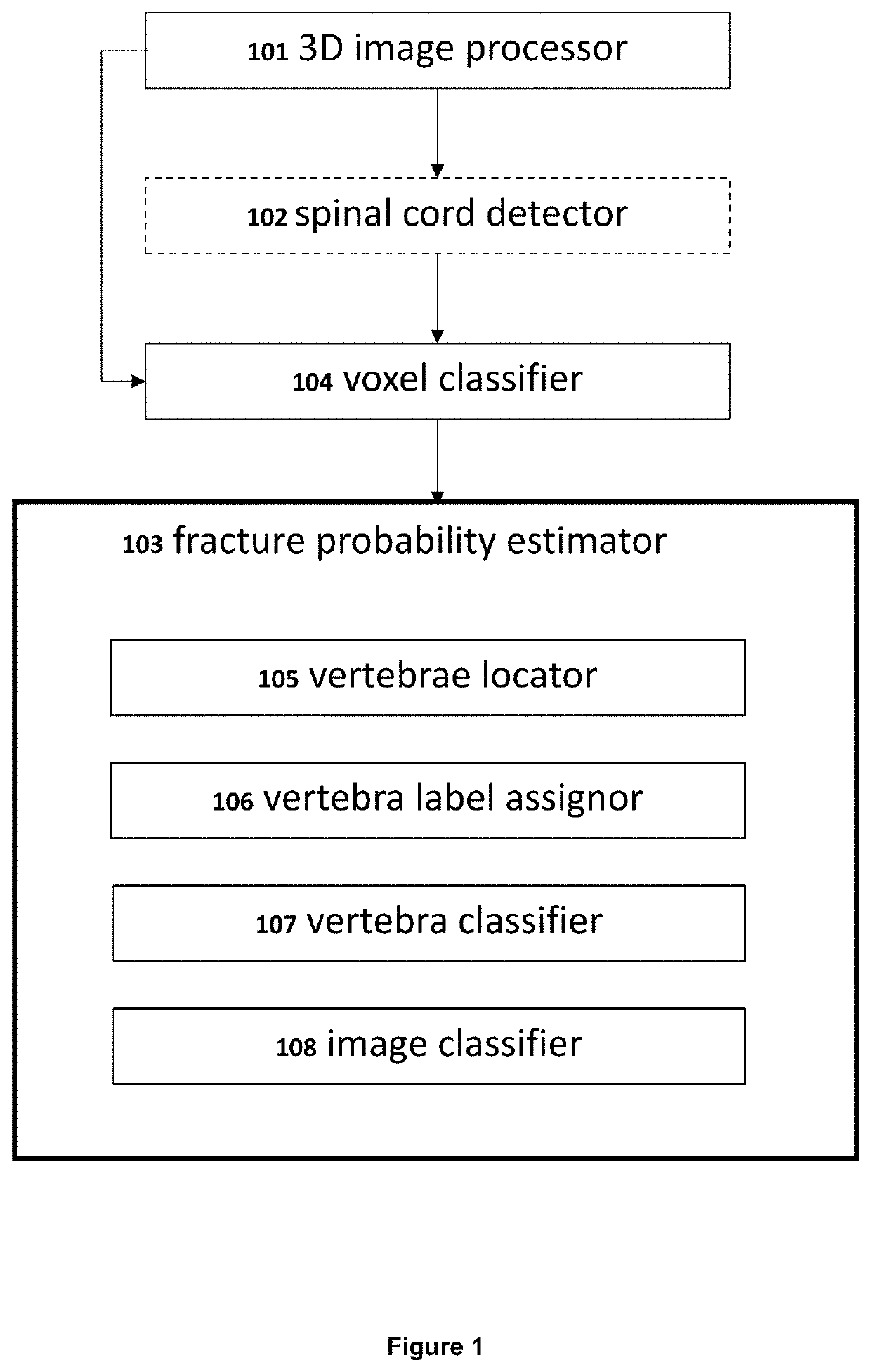Three-dimensional medical image analysis method and system for identification of vertebral fractures
a three-dimensional medical image and imaging technology, applied in image enhancement, tomography, instruments, etc., can solve the problems of difficult clinical assessment of vertebral fractures, low screening and early diagnosis of patients with vertebral fractures by bone care givers in clinical centers
- Summary
- Abstract
- Description
- Claims
- Application Information
AI Technical Summary
Benefits of technology
Problems solved by technology
Method used
Image
Examples
example 1
ce of the System for Identification of Vertebral Fractures on a Set of CT Images
[0123]120 anonymized image series of abdomen and thorax CT examinations from the imaging database of one university hospital were used for the method described herein. These images were acquired in February and March 2017 on four different scanners (Siemens, Philips and two types of GE scanners) including patients with various indications above seventy years of age (average age was 81 years, range: 70-101, 64% female patients). As a result, this dataset contains a heterogeneous range of protocols, reconstruction formats and patients representing a sample from clinical practice for this patient cohort. The vertebrae distribution contains a total of 1219 vertebrae of which 228 (18.7%) are fractured. The dataset has been curated by one radiologist (S.R.) providing Genant grades (normal, mild, moderate, severe) for every vertebra in the field-of-view.
[0124]Table 1 summarizes that the patient-level prediction...
PUM
 Login to View More
Login to View More Abstract
Description
Claims
Application Information
 Login to View More
Login to View More - R&D
- Intellectual Property
- Life Sciences
- Materials
- Tech Scout
- Unparalleled Data Quality
- Higher Quality Content
- 60% Fewer Hallucinations
Browse by: Latest US Patents, China's latest patents, Technical Efficacy Thesaurus, Application Domain, Technology Topic, Popular Technical Reports.
© 2025 PatSnap. All rights reserved.Legal|Privacy policy|Modern Slavery Act Transparency Statement|Sitemap|About US| Contact US: help@patsnap.com



